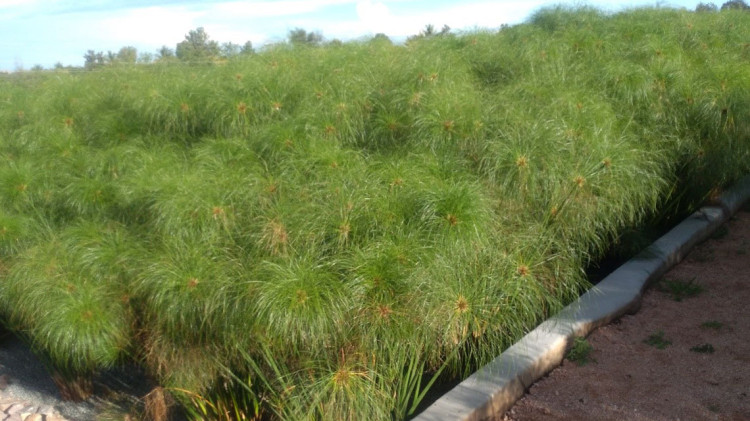Mining is a crucial industry in countries rich in resources, as it provides raw materials and income that contribute to economic growth. However, the modernization of mining operations and ore-processing technologies have led to increased excavation of mineralized rocks from open pit and underground mines, resulting in a significant amount of waste.
The IAEA is launching a new Coordinated Research Project (CRP) to evaluate the remediation of mining wastewater using constructed wetlands and is inviting proposals from research institutions and mining companies. The "Optimizing mining wastewater remediation" research project will be conducted for 5 years.
Tailings and mine waste dumps are sources of effluents from mining operations, containing heavy metals and other contaminants such as nickel, arsenic, manganese, molybdenum, selenium, fluorides, and sulphates. In uranium mining operations, radioactive contaminants predominantly from the uranium (238U) and thorium (232Th) series are also present. Improper treatment and disposal of these effluents can have serious environmental impacts. Conventional wastewater treatment systems -are limited in their capability to remove recalcitrant pollutants, represent high operational and maintenance costs, added to high energy consumption.
Therefore, there is an obvious demand to focus on alternative treatment methods that are easy to construct and simple to operate and maintain.
Constructed Wetlands (CWs) are one of the most promising and sustainable alternatives for wastewater treatment. They are man-made engineered systems, which utilize the natural geochemical and biological processes involving wetland vegetation, soils, and associated microbial assemblages, to assist in the treatment of wastewater. Correspondingly, CWs are low cost and green technology systems due to their low energy consumption and their simple mechanical infrastructure. The IAEA research project will target optimizing CWs efficiency for wastewater treatment.
Rob Little, Head of Sustainability at URENCO, said, "Supporting this project through our Social Impact Partnership with the IAEA underscores our commitment to sustainable nuclear stewardship by reducing the impact of uranium mining."
Constructed wetlands offer advantages over conventional wastewater treatment plants, but their complex hydrodynamics pose challenges in optimizing treatment efficiency due to insufficient knowledge and understanding. The CRP participating research institutions will focus on employing radiotracer techniques and flow modelling to determine mean hydraulic residence times of CWs as a function of their pollutant removal, providing insights into flow hydrodynamics and offering data for design improvement and optimization.
Radioanalytical and mass spectrometry analysis of CW water and sediment samples can ascertain component (elemental, radioactive) distributions as well as water quality analysis. Advice and guidance on these measurements will be provided by the IAEA Terrestrial Environmental Radiochemistry (TERC) Laboratory at Seibersdorf, Austria
By collaborating with research institutions and industry partners, we are enhancing our understanding of mining wastewater remediation and also paving the way for the reuse of water as an essential resource.
Improved understanding of CW hydrodynamics will lead to improved CW designs and prototypes for more effective mining wastewater treatment and increased availability of treated water for reuse and recycle purposes.
Optimizing mining wastewater remediation CRP Objectives
The overall objective of this CRP, running from 2024 through 2028, is to provide insights into the parameters defining the hydrodynamics of Constructed Wetlands to enhance understanding of their function and demonstrate their viability as a treatment option for wastewater from various metalliferous mines, including copper, gold, and uranium.
Specific objectives are:
- To characterise the mine wastewater for different types of metalliferous mines.
- To identify suitable radiotracers and establish best practices and guidelines for evaluating CW hydrodynamics, as well as pinpointing contaminants for removal from wastewater.
- To identify and implement mechanisms for recovering contaminants or hydrolysis products concentrated in CW components, such as biota and sediment…
- To design and model flexible CWs for mine wastewater treatment, including potential opportunities for performance improvement, optimisation and prototyping.
- To evaluate CW performance at selected types of metalliferous mines.
- To perform an economic viability analysis of mine water CW and provide recommendations for their implementation.

HSSF Constructed wetland at Mwanza Abbatoir. (Photo: Prof. Karoli Njau Nelson Mandela African Institution of Science and Technology (NM-AIST), Tanzania)






